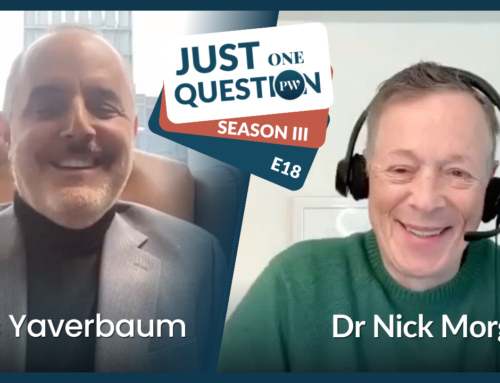This is the third installment in a three-part series adapted from my recent book, Can You Hear Me” How to Connect with People in a Virtual World. In the first part, I argued that the internet and the mobile phone have fundamentally changed the sales cycle. So, salespeople need to learn new techniques of selling, half in the real world and half in the virtual world. These requirements make listening, something that has always been important, essential in the virtual-real world. In the second part, I said that you begin by establishing a connection. Then, you let third-party endorsement speak for you.
Online sales is all about credibility and trust, which you establish through third-party endorsements and content marketing. Use content marketing to establish your credibility, and let the third-party endorsements do the hard work of establishing trust. Failing either one, your relationship with the client or customer won’t be durable. Without credibility, you’ll find that your customer will be likely to go elsewhere in search of expertise, even if they trust you as a human being. Do you really understand the difference between Robusta and Arabica? Without trust, a client will be tempted to mine you for expertise and then go make the ultimate purchase from someone else. Will you really follow through on the after-sale delivery of the beans in a timely way?
How do you establish these two key aspects of a relationship? Once again, by listening. Show that you understand the issues as well as, or better than, the client does, and you’ll create credibility. She gets that I loathe Robusta! Finally, someone who knows something about coffee!
Then, show how you can solve that problem. You’ll forge a strong bond of trust with the client when you take away the point of pain that sent the client to the marketplace in the first place. That Ethiopian first growth will be just the right strength for your morning cup.
Credibility and trust underlie online sales success. They are the two key ingredients for building a strong, enduring relationship with a customer. Closing a sale is all about understanding the customer’s half-online, half-real decision-making process. Ask yourself, where are my clients or customers when they get in touch with me? Are they happy with the product they have, but want to be reassured that they made the right decision? Put your clients into the database to check in with them periodically so that you’ll have a relationship established when they are ready to buy.
Customers in the first stages of decision making just need help with framing the problem. Less information is better. Just give them a statistic or a very brief verbal portrait of what the future might look like as a way in. Do you realize what the recent political developments in Ethiopia might mean for coffee drinkers everywhere?
Or are they in the throes of the problem, uncertain of which way to go, looking for answers? Jump in with helpful links, information, and unbiased advice. This is the point to become as un-sales-y as it is possible to get. Customers deep in the problem want information—comparisons, data, details. At this stage, all the product or service knowledge you have is actually useful.
Or have they already decided on a course of action and are basically looking for you to take the order? More and more customers are coming to salespeople in that state of mind. It’s just a matter of recognizing this stage of readiness and negotiating the deal. Clients who have already made up their mind don’t want to be slowed down, so don’t make it hard for them to buy. You’ve made a great choice. That Arabica shipment will take care of all your needs and also make you a spectacular cup of morning coffee. Now let’s get that paperwork out of the way.
Finally, involve your customers with small steps to get them comfortable to take the bigger ones. It’s imperative that you don’t do all the work in the sales process. If you keep your customers passive, don’t be surprised when it’s hard for them to suddenly get active and agree to close the sale. Too many salespeople think that it’s all up to them. But the real secret is to get the customer working on the deal, too. Begin with little steps, those that don’t involve big commitments, and then work up from there.










Leave A Comment